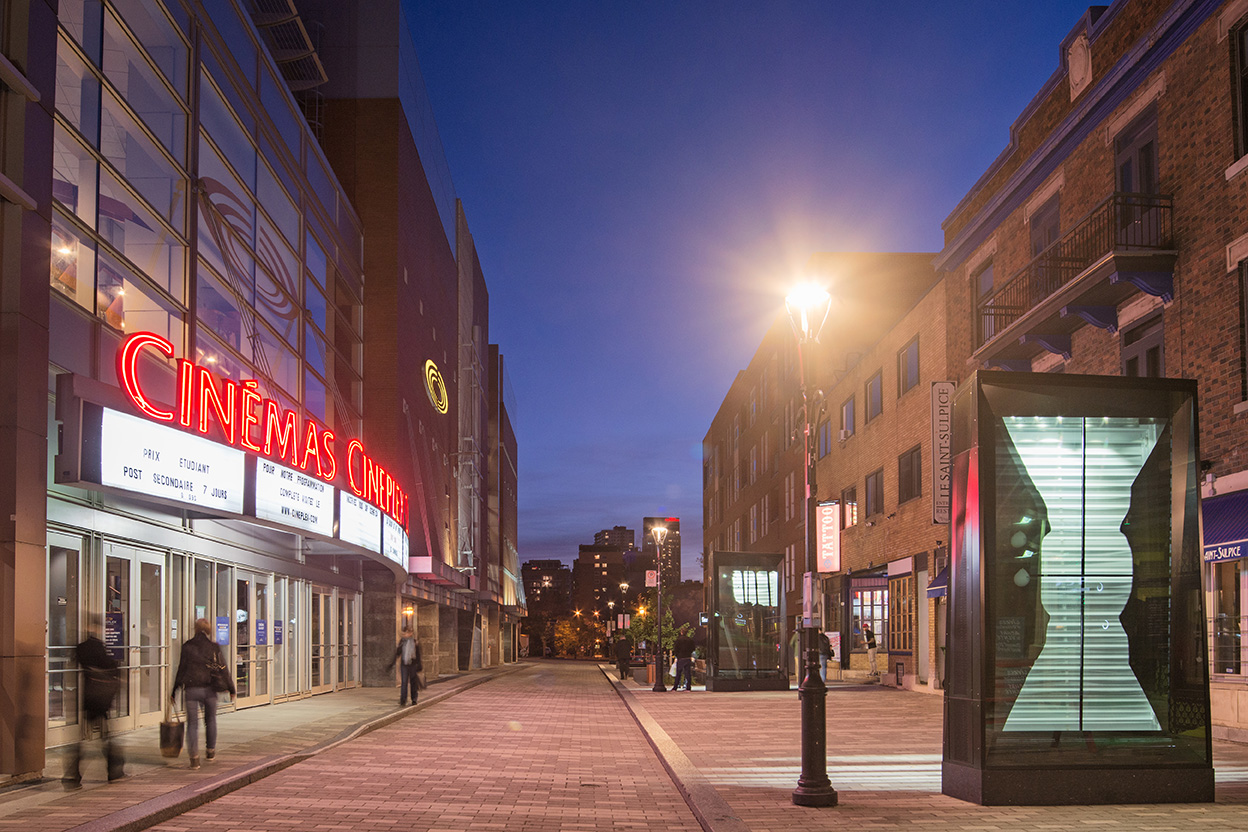

Jonathan Villeneuve was born in Montréal, where he lives and works. He earned a BA from the École des arts visuels et médiatiques at UQÀM in 2006 and completed an MFA in open media at Concordia University in 2009. His work has been presented in Québec and Canada as well as abroad, including the Triennial of New Media Art at the National Art Museum of China in Beijing. He has produced a number of public art projects, including at Centre Vidéotron (Québec City) and for events in the Quartier des spectacles (Montréal).

Artwork description
Lux Obscura is a digital art installation composed of two vertical monolithic steles acting as dynamic screens, placed face to face 20 metres apart. Each monolithic panel presents a real-time continuous animation operated by an electro-mechanical system. The animations are looped and programmed to create perpetual movement of a chase between ghostly characters that refer to a film noir aesthetic. The work is optimally seen at dusk as dynamic lighting installed at the top of the work is projected through louvres to create plays of shadow and light on the ground.
Catching the attention of passersby thanks to the rapid, furtive movements of enigmatic characters and objects crossing the screen, the work offers a cinematographic experience in the urban environment. Like the theme of the work, the title refers to an archaic tradition or technique, whereas the technical processes of the work use the latest technologies. The artist’s intention is to celebrate a certain tradition of history of cinema and images, solidly anchored in the present through digital technologies.
Lux Obscura was produced following a Quebec-wide competition by public notice held in 2016. The project was part of the redevelopment of Émery Street and, more broadly, the revitalization plan for the Quartier des spectacles. The public art project was a bequest from the Government of Québec for the 375th anniversary of the foundation of Montréal.



